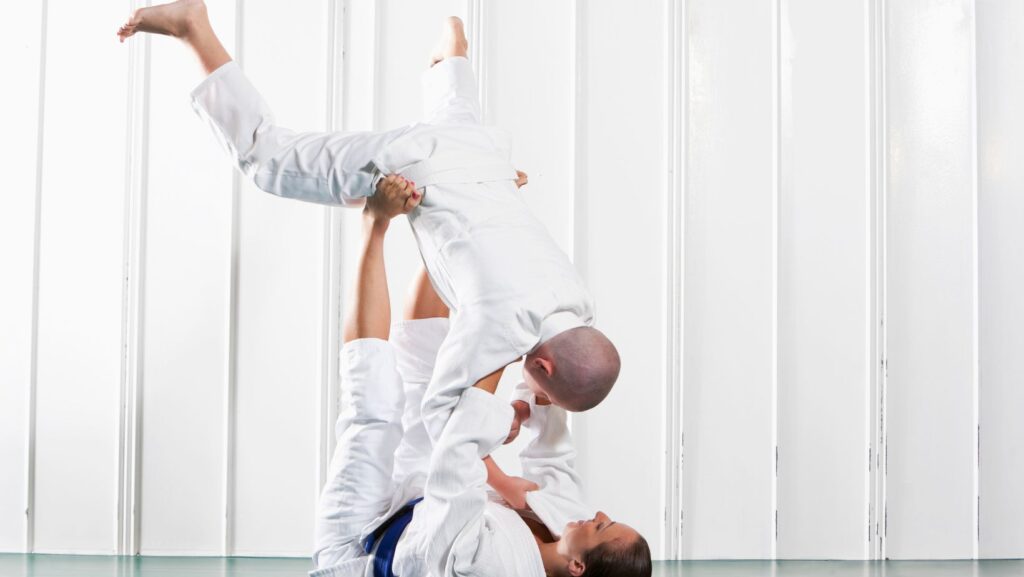
Brazilian Jiu-Jitsu (BJJ) is often viewed as a martial art rooted in self-defense and sport, but there’s much more to it than just grappling. For athletes in any field, BJJ offers invaluable lessons in strategic movement, body control, and decision-making under pressure, enhancing overall performance.
In this post, we’ll explore how BJJ’s core principles can teach athletes the art of strategic movement, a skill crucial to martial arts and virtually every athletic discipline. Through these lessons, athletes can improve their performance, develop better control over their bodies, and sharpen their mental game.
The Importance of Strategic Movement
At its core, Brazilian Jiu-Jitsu is about more than just raw strength or speed; it’s about using technique, leverage, and positioning to control your opponent. In BJJ, the ability to move strategically is essential to both offense and defense. Every movement is calculated with the aim of gaining an advantage, whether by improving your position or neutralizing your opponent’s attacks.
In sports like football or basketball, athletes often rely on instinct and muscle memory to make quick decisions on the field. While these instincts are crucial, the strategic thinking in BJJ takes that decision-making to a deeper level. When an athlete trains in BJJ, they learn to think two or three steps ahead, considering both their own movement and how it affects their opponent’s positioning. This level of foresight can help athletes in any sport anticipate actions and make quicker, more effective decisions.
That said, investing in quality gear such as BJJ gis and other apparel from Kingz is very important for comfort, durability, and optimal performance. A well-made gi supports your movement while allowing you to focus on your technique without distractions, which is crucial for achieving the best results.
Developing Body Control
One of the key elements that athletes can learn from Brazilian Jiu-Jitsu is how to control their bodies. In BJJ, every movement is designed to create maximum efficiency while minimizing unnecessary exertion. Athletes in other sports can benefit from this philosophy of body control, which can help reduce the risk of injury and improve overall performance.
For example, in BJJ, athletes learn how to use their body weight effectively to maintain balance and create pressure on their opponent. This ability to control one’s body can be applied to any sport that requires stability and agility, such as wrestling, swimming, or even running.
Athletes who practice BJJ also develop stronger core muscles, better flexibility, and enhanced coordination. These attributes translate to improved posture, stronger body mechanics, and better movement efficiency on the field or court.
Decision-Making Under Pressure
One of the most valuable lessons athletes can learn from Brazilian Jiu-Jitsu is how to make decisions under pressure. BJJ practitioners regularly find themselves in a disadvantageous position and must find a way to turn the tide. Whether they are defending against a choke, escaping an armbar, or maintaining control on top, the ability to make quick, effective decisions is vital.

This is where BJJ truly excels in teaching athletes mental toughness. In BJJ, there’s a constant balancing act between aggression and patience. At any given moment, an athlete must decide whether to push forward, play defense, or wait for an opening.
These same mental strategies apply to athletes in all sports. A football player, for example, must decide whether to break through a tackle or wait for a block. A boxer must decide when to throw a punch and when to evade. The ability to make these decisions under pressure is what separates great athletes from good ones. Athletes who train in BJJ learn to stay calm under pressure and trust in their ability to make sound decisions when the stakes are high.
Cross-Training Benefits in BJJ
BJJ offers incredible cross-training benefits that can complement virtually any sport. The principles of balance, timing, spatial awareness, and strategy make it an ideal training tool for athletes looking to improve their overall physical and mental performance.
For example, a sprinter can use BJJ to improve their core strength and flexibility, while a football lineman can use it to develop better leverage and body control in one-on-one situations. BJJ’s focus on ground work, as well as its emphasis on using leverage over strength, translates well to almost every other athletic discipline.
Moreover, BJJ teaches athletes to control the pace of a match, helping them manage their energy during competition. A wrestler, for instance, could benefit from learning to slow down their opponent by controlling their position, just as a marathoner might use pacing strategies learned in BJJ to maintain endurance over the long haul.
Improving Technique with BJJ
While many sports focus on building strength and endurance, BJJ takes a different approach by emphasizing technique above all else. In fact, BJJ athletes often train for years to perfect basic movements and positions. For athletes in other sports, this focus on technique can be eye-opening. It teaches them that mastery comes not just from physical conditioning but from continuously refining skills.
BJJ practitioners also learn to adapt their techniques to their opponent’s movements, a crucial skill in any sport. In sports like tennis, golf, or martial arts, athletes must adjust their technique depending on the situation.
Conclusion
Brazilian Jiu-Jitsu offers valuable lessons that go beyond the mats and can positively impact athletes in any sport. Through strategic movement, body control, and decision-making under pressure, athletes can sharpen their physical and mental skills, leading to improved performance on the field, in the gym, or on the court.
BJJ is a mindset and an approach to movement that can revolutionize the way athletes train and perform. With the right gear and the right mindset, athletes from all disciplines can enhance their performance and unlock new levels of success.












